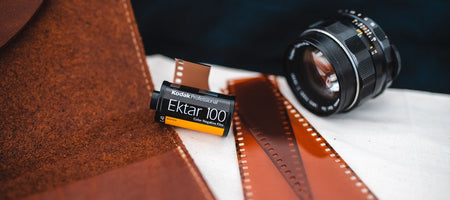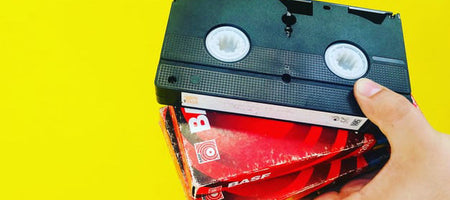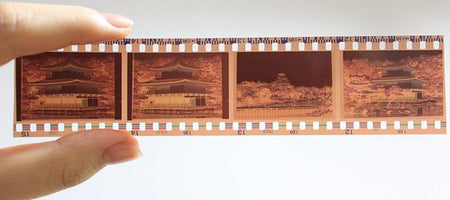Chances are, at this very moment, you’ve got a camera with you: a pocket-sized smart phone with the ability to take and store thousands of high quality photographs. With the simple click of a button, you can freeze a moment in time to create a crisp image of a real and tangible moment. Selfie at the beach? Yup—and you already sent it via iMessage to Mom and Pops back home.
But it wasn’t always this way. Back before automatic settings and user-friendly software and handheld devices, technology was bulky, slow-moving, and totally inefficient. Photos were once dull, grainy, and colorless. There were no delete buttons, playback settings, filters, or involuntary exposures. Not quite 200 years ago, photography was more like a science than an art, as it required toying with chemicals and lighting. And its history proves the astounding evolution required of any skill.
THE FIRST PHOTOGRAPHER
Everything has a beginning. Every art form and skill set starts with someone, somewhere. For photography, it was in France before the turn of the 19th century.
In the late 1790s, French experimentalist Joseph Nicéphore Niepce and his brother—both of whom had an interest in science and engineering—began discussing ways they could use light to produce imagery. Because they had other priorities at the time (they were working to create a combustion engine for propelling boats), progress was slow, and it wasn’t until the birth of lithography in 1813 that their interest increased. Lithography—a process that used treated, flat surfaces to repel inks from areas not meant for printing—is what inspired Niepce to return his attention to photographic experiments, eventually leading to his founding of heliography. And it is heliography that was used to create the oldest surviving photograph made in camera.
WHAT IS HELIOGRAPHY
Heliography was a printing process that used a natural asphalt, bitumen, as a coating atop glass or metal plates. The bitumen then hardened based on its exposure to light. When the plates were washed with oil and lavender, only the rough, inked areas remained.
In 1822, Niepce made a successful heliograph of an engraving that depicted Pope Pius VII, which was destroyed in an effort to copy it years later. In the years in-between, Niepce experimented with different chemically-lined plates that could be inked for printing.
THE FIRST PHOTOGRAPH
Niepce coated a pewter plate with the same solution as he did for engravings, and waited. After eight hours of exposure, Niepce cleaned the plate with a mixture of oil and lavender and petroleum to dissolve any bitumen that had not been hardened by light. Doing so resulted in a permanent picture, a one-of-a-kind photo, revealing a view of the courtyard outside of his home in Le Gras. To this day, Niepce’s “View from the Window at Le Gras”, taken in 1826, is considered the first successful and longest-living photograph; and Niepce is credited as the world’s first official photographer.
PHOTOGRAPHY AFTER NICEPHORE
Following “View from the Window at Le Gras”, much of the progress made in photography is attributed to Louis-Jacques Mandé Daguerre, who had reached out to Niepce in 1825 to collaboratively continue photographic research. In 1829, four years after initially declining to work with Daguerre, Niepce agreed to a 10-year partnership with the artist, under which the two would make improvements to heliography. When Niepce died in 1833, Daguerre continued the work, eventually leading to the invention of the daguerreotype—a process that employed iodine-exposed sensitized silver plates and mercury.
All while the two French photographers were putting their minds together, Englishman William Henry Fox Talbot was working on some tricks of his own. He had also invented his own method of photography at the same time the Daguerre was developing the daguerreotype. When the news of Daguerre’s invention circled, Talbot was heartbroken, unaware that someone else was inventing something similar to his own creation. He decided to not waste anymore time, and began working hastily towards making further improvements. This eventually lead to the concept of negative/positive printing, and later he implemented calotype—a printing method that used gallic acid and silver nitrate to help with undeveloped and hidden bits of imagery. It wasn’t long before the calotype became the new standard. Niepce’s heliography and Daguerre’s daguerreotype were things of the past.
THE EVOLUTION OF PHOTOGRAPHY
To this day, Talbot, Daguerre, and Nicéphore are considered the three founding fathers of photography across the world, each of them contributing to the art form in their own unique way.
Except, imagine their world. A world where “photography” wasn’t yet in the dictionary. To brainstorm such a revolutionary printing process took great risk, trial, and error. Without their original ideas, photography may not exist today.
It’s 2018 and camera equipment is now more lightweight and efficient than ever before. High quality photos can be taken on one’s pocket-sized cell phone, immediately downloaded to a laptop, uploaded to the Internet, and viewed for all to see. Professional photographers can now set digital cameras to preferred settings, choosing specific shutter speeds and apertures. In 1/4000 of a second, an image can be created and stored on an inch-wide memory card. The progress made is astounding, proving the power of dreaming big, taking risks, and leaping into the unknown. So, next time you whip out your half-pound iPhone for a selfie at the beach, I dare you to take an extra moment and think of the history that makes modern photography possible.













